

Ar 340
The Arado Ar 340, though roughly the same size and weight as the other entries in the "Bomber B" program differed considerably in its configuration. Its origins were derived from the Ar E 500 project of 1936. It featured a central fuselage, twin booms and a trapezoidal wing. It was to be powered by either the Jumo 222 or DB 604 engines. It had two remotely controlled turrets as well as additional machine guns in the rear of the fuselage and in the ends of the tail booms. Unlike most twin boom aircraft built during the war the Ar 340 did not have a tail plane connecting the two tail booms, having tail planes mounted outboard of the booms only. This allowed the machine guns in the rear of the fuselage to have a greater arc of fire. A mock up was built in 1940 and was evaluated at the end of the year by the RLM. It was found to be satisfactory except for the bomb release system. Following revisions to this, the design was resubmitted to the RLM in February of 1941 only to be rejected outright. This was most likely a result of the conservative nature of the RLM at the time and the rather more radical appearance of the Ar 340. Arado was considerably disappointed as they had counted on an order for ten prototypes. Instead their project would never be built so one can only speculate as to how it might have fared. Without the planned high output engines it most likely would have not fared any better than the other entries.
The Kit
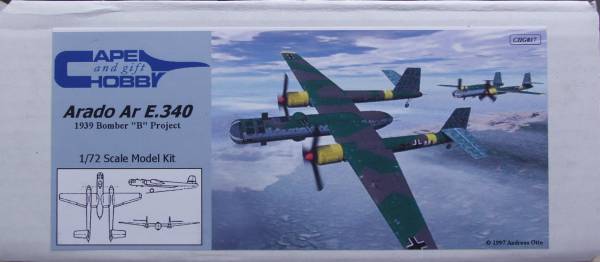
The Cape Hobby and Gift kit is an all resin kit with vacuform canopies. It comes in compact and sturdy corrugated cardboard box. Even with it's small size the parts only take up a portion of the box and on my kit the balance was fill with styrafoam peanuts. This kit was made for Cape Hobby and Gift by Anigrand and is also sold under their name, The advantage in getting the CHG kit is that it comes with two of each of the vacuform parts. OK, let's see what's inside. The resin parts are all enclosed in a compartmented plastic bag shown below. The clear parts were just loose in the box with the instructions and decals, which had a piece of protective paper on them.
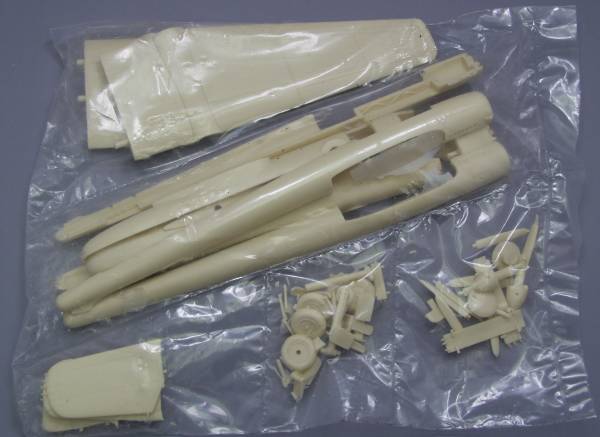
The parts are molded in a light tan resin and when unpacked all parts were intact. Over all the parts were of good quality with a reasonably smooth finish and only minimal pour stubs to clean up. A few parts showed parting lines and the tips of the wings and other parts which were at the opposite end of the mold from the pour stub had a bubble or two but nothing serious. Relatively few pinholes were found as well as surface defects. The gear doors are molded in the closed position and will need to be cut for gear down display. They have a line where the cut needs to be made and this shouldn't create and problems.
Eight prop blades were supplied but the spinners are only drilled for three blades. Had it been built with the engines intended, I suspect it would have had four bladed props to absorb the power those engines would have produced but in this case I'm not sure it matters. The artwork on the box has three bladed props. The landing gear struts do not appear to have any internal bracing but if it turns out that the gear sags over time it would not be all that hard to replace it with some telescoping brass tubing as the struts are not all that detailed anyway.
The gun barrels are supplied in resin but would look much better if replaced with some hypodermic tubing. Only five were supplied and by my count there should have been eight. Interior details are limited to seats with no harnesses, control columns of which there are two which is some what unique to German bombers and an instrument panel with no raised detail. The glassed areas are some what large so some added detail in this area might have been preferred. The tail pieces had pins molded on that align with mating parts. As can be seen in the photo one tail plane was missing the pins but I'm not convinced the pins alone will support the tail parts and I will most likely add some metal reinforcement as well.
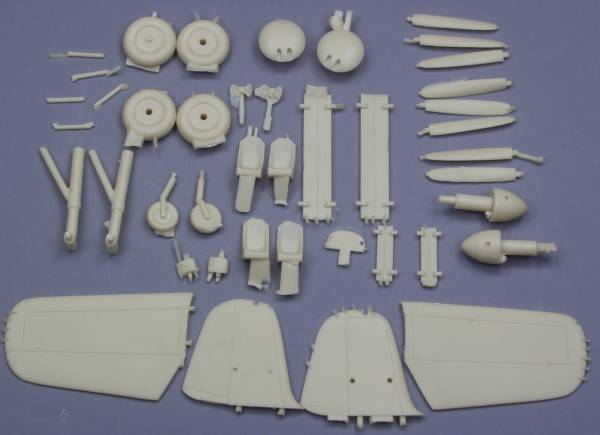
The wings are nicely done one piece castings with no noticeable warp and the dihedral outboard of the booms appeared to be equal on both wings. The wings have some good sized stubs to mate with holes in the fuselage which is way better than the butt joint often seen on resin models this size. The surface was smooth and I only found a couple pinholes that will need to be filled. My biggest complaint on the wings is the panel lines, which are too wide and deep for this scale. They are OK for the ailerons and flaps but too much for the other panel lines.
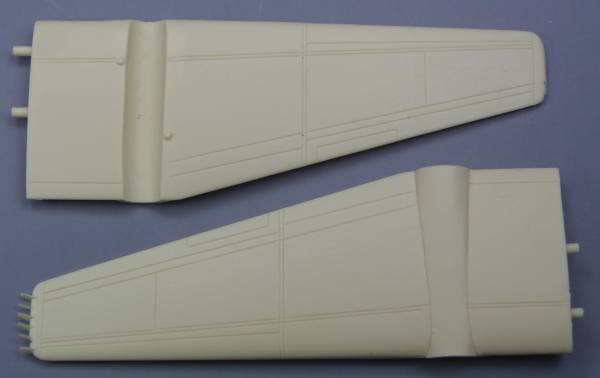
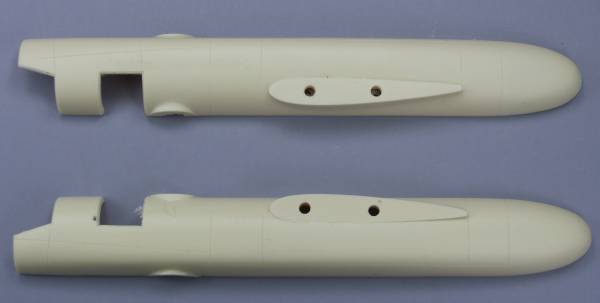
The twin booms were also hollow cast. In my kit one pair was already separated and the other set still attached to the pour stub. Both booms exhibited a slight bow towards the hollow side, which should cancel each other out when glued together. The wheel wells are boxed in as part of the booms and some structural detail is molded into the top of the wells. There is also a dimple where the gear struts are to attach. I would think this either needs to be drilled out to provide more strength to the gear or a pin used otherwise this joint will be weak. The boom halves seemed to exhibit some misalignment when test fitted but until they are cleaned up it's not easy to see how much of a problem its going to be. A few pinholes and bubbles were found on these but nothing of a serious nature. The engines are molded integral to the booms. The engines were to be liquid cooled with annular radiators. This is area is only represented with a slot but in this scale it not all that noticeable anyway. The bottom side of the wings has nubs to aid in aligning the booms to the wings but I suspect some filling work will be required in this area. The booms had panel detail similar in nature to the fuselage and the tail wheel bays are boxed in with structural detail in the top like the main gear wells. Altogether the kit contains 50 resin parts.
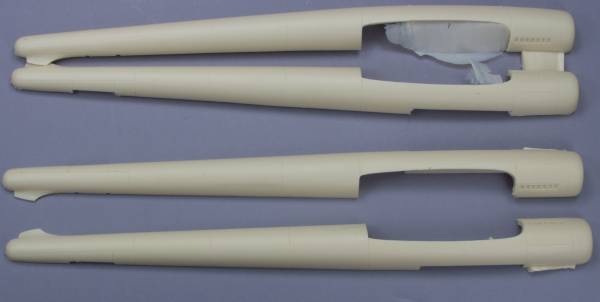
The glazings were nice and clear with light but discernible markings for framework. Considering this plane was to have a pressurized cockpit the glass areas were quite large so masking should be rather easy compared to other German subjects from that time period and as I mentioned at the beginning of the review with the Cape Hobby and Gift version you get two of each of the vacuformed parts which totals to 6 clear parts.
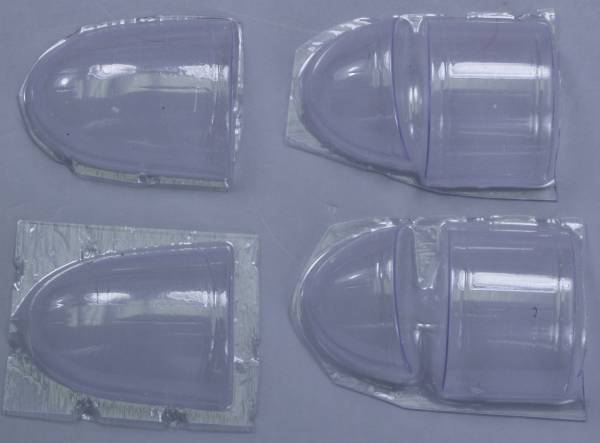
The instructions, such as they are, consist of a single one sided page with a history and specifications reprinted with permission from the Luft 46 website and five photo sized black and white copies of photos of a partially assembled kit showing where most of the parts go. It's my understanding the Anigrand kit has slightly better instructions but anyone with a few kits under there belt are not likely to go too far astray as this is a pretty simple kit. No painting or marking instructions are included.
Decals consist of national markings in a couple styles, swastikas and some unit code letters and numbers. Since this aircraft was never built the 'what if' possibilities are endless. The decals are thin and registered but I have not tried them yet so can't comment on their quality.
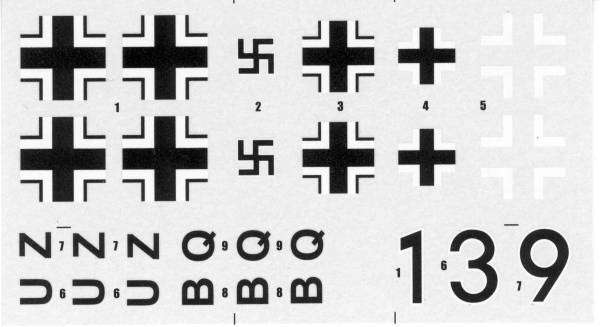
Conclusions
I guess the fact that I'm drawn to kits like this indicate I have terminal Luftitus. Although I found a number of things to pick on, this is still a nice kit and most of the problems noted can be found in most resin kits. I was drawn to it because it now allows one to build all four of the contenders in the "B" Bomber program which I intend to do and because of it's unusual appearance, I may move it ahead on my priority list of kits to build. While some areas cry out for more detail there really isn't any source of information for these areas so one can be as creative as they like or build as is. I didn't see any reason why someone with a few resin models worth of experience would have any problem with this kit.
Links to kit build or reviews
References